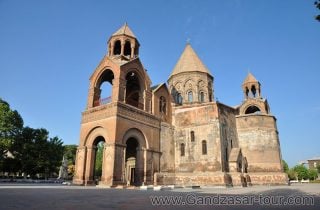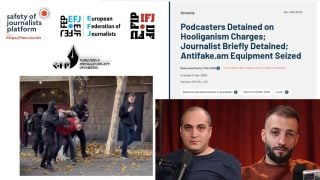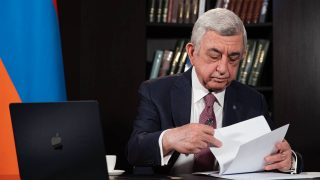
Identifying the Islamic State Threat to Georgia
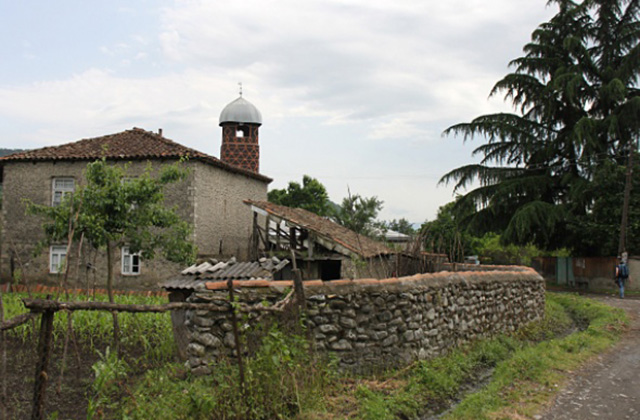
Tbilisi rubbishes Russian claims that jihadists have set up training bases within the country.
Analysts are warning that a focus on Islamic radicalisation in Georgia’s remote Pankisi Gorge may serve to divert attention from extremist threats elsewhere in the country.
Several dozen Pankisi residents are known to have travelled to fight with Islamic State (IS) in Syria and Iraq. The region, 160 kilometres northeast of the Georgian capital, hit the headlines again last month after Russian foreign minister Sergei Lavrov claimed that jihadist training camps were operating there.
Lavrov told a televised press conference on January 26 that IS militants were “using this barely-accessible territory to train, rest and replenish their supplies”.
The previous month, Davit Sanakoev, head of the de-facto government delegation of the breakaway region of South Ossetia, also claimed that IS was operating in Pankisi.
The gorge has a largely Muslim population, which includes many ethnic Chechens. Russia was accused of bombing Pankisi, then considered a rebel stronghold, during its Chechnya campaign in 2002.
This meant that Lavrov’s comments set alarm bells ringing in Tbilisi, which strenuously rebuffed his claims.
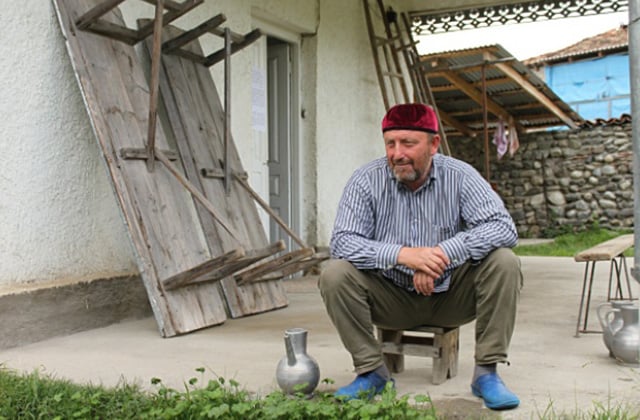
“I am absolutely sure that our law enforcement agencies fully control the situation in Pankisi,” Georgia´s president Giorgi Margvelashvili told a meeting of the country´s national security council on January 29, according to the Gruziya Online website.
The next day, the president travelled to Pankisi together with the American and EU ambassadors and visited its largest settlement, the village of Duisi.
US ambassador Ian Kelly stressed that Tbilisi and Washington cooperated very closely in the fight against terrorism.
“The prime minister has stated unequivocally that there are no training centres for terrorists here in Pankisi Gorge and you have heard the president repeat that,” he told journalists, according to the US embassy website. “I take their words at face value. There are no training camps for terrorists in the Pankisi Gorge.”
The gorge is inhabited by around 8,000 Kists, a Muslim ethnic minority related to the Chechens of the North Caucasus. There are also Chechen refugees who escaped over the mountains from two wars in their own lands over the last two decades.
Some of those fleeing Chechnya brought Islamic fundamentalist ideas with them. This conservative strand is known here as “Wahhabism”, a loose term used to describe various forms of Sunni fundamentalist ideology.
FIGHTING RADICALISATION
Up to 200 Georgian nationals are believed to have travelled to Syria and Iraq to fight with IS.
(See also Keeping Islamic State Out of Georgia).
While the government says only 30 came from Pankisi, other estimates are higher. Local new source the Information Centre of Khakheti (ICK), for example, put the number from Pankisi alone at 50.
Bennett Clifford, a researcher from Wake Forest University in the US who carried out a study in Georgia last year, said the number from Pankisi may be double that figure.
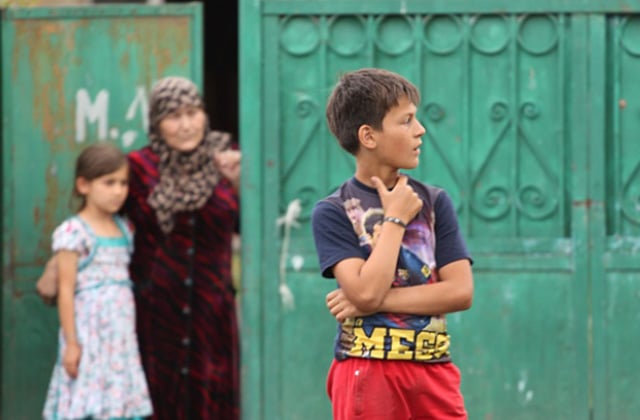
At the beginning of January, the Georgian media reported that two Pankisi fighters in their early twenties, Ramzan Pareulidze and Mikhad Turkoshvili, had died in Syria. Both may have served under Tarkhan Batirashvili, also known as Abu Omar al-Shishani, a senior IS commander and Pankisi native.
However, Clifford said the focus on Pankisi threatened to divert attention from radicalisation elsewhere in the country. Although the numbers remained small, other Georgian Muslims were also vulnerable, he said, highlighting the southern region of Adjara where he said discriminatory practices against Muslims by Christians could be a push factor towards extremism.
The mix of people travelling to Syria and Iraq included “ethnic Georgian Muslims from Adjara, some ethnic Azeri villages, and possibly a few Christians who ended up converting to Islam,” he said.
“Policymakers must recognise that the issue of violent extremism and radicalisation has metastasised. It is no longer merely a ‘Pankisi problem,’” Clifford continued. “The government and local communities need to adopt strategies that deal with the specific problems that individual Muslim communities in Georgia face today.”
Last November, Georgian IS fighters in an IS online video were identified as coming from Adjara and Guria in western Georgia rather than Pankisi. One of them, Khvicha Gobadze, died fighting in Syria earlier this year.
Also in November 2015, Merman Paichadze, a former imam of Tsalka, a town which includes several thousand people resettled from landslides in Adjara, was reported to have left for Syria with his family.
Clifford noted that Paichadze was related to Tamaz Chaghalidze, an Adjara native who also left for Syria.
In early 2015 Chaghalidze issued online threats against Georgia, writing, “We will raise so much hell over your patriarchy’s oppression of Adjara that you robe-wearing rats will regret not being born as reptiles.
“I swear on Allah’s name that all you kaffirs [unbelievers] will pay with your dirty blood for everything.”
OTHER ETHNICITIES AT RISK
Experts also warn that the country’s ethnic Azeri minority is another group at risk from radicalisation.
Last month, 23-year-old Fikret Ahmadov was stabbed to death by a Wahhabi convert after giving an interview to Georgian Public TV criticising the spread of radical Islam in his home village of Ponichala. Residents of the majority ethnic Azeri village near Tbilisi demonstrated against the Wahhabism following the murder.
Giorgi Bobghiashvili, project associate at the Tbilisi office of the European Centre for Minority Issues (ECMI), has been following the situation there.
“In general, the outflow [to extremism] is not as much as in Pankisi or Adjara and Guria, but the Salafi faith is still actively practiced and the younger generation is mainly affected, with the internet as the main source and instrument for recruitment,” he told IWPR.
The first two women reported to have left for Syria came from the ethnic Azeri village of Karajala in eastern Georgia.
“Karajala is the only Sunni Azeri village in Kakheti, while four other villages that rejected extremist ideology were Shia,” Bobghiashvili noted.
“These incidents are growing in frequency, which points to a growing challenge for extant Muslim institutions in the regions,” added Clifford. “In Karajala, there were several incidents of petty thieves having their fingers cut off by Salafists, as this is the punishment suggested by their interpretation of Shariah.”
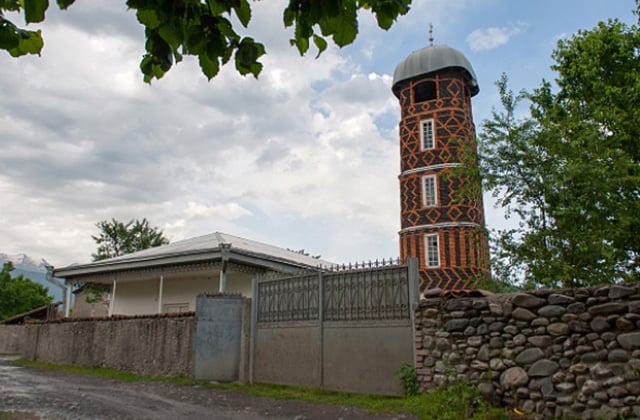
According to Clifford, a main driving force behind pan-Islamic movements such as Salafism is an attempt to decouple religious identity from a national one.
“For the Georgian Azeri minority, this is expressed through competition between members of the community who favour ´traditional´ iterations of Islam such as Shia and Sunni Islam, which are often times highly tied to the Georgian state and its political institutions, versus those who disavow traditionalism on the basis that Georgian national identity is incompatible with Muslim identity,” he said.
Bobghiashvili said that the spread of such ideology was most likely to happen in communities where religious observance and traditional forms of Islam were weak.
Clifford said that this also offered a potential solution to the problem.
“It points to the number and relative strength of independent Muslim institutions to limit the effects of sectarian conflict,” he explained. “Without a doubt, the Georgian Azeri community is still heavily affected by radicalisation, but the situation could be improved by measures to improve religious education, involving local community leaders in institutional decision-making, and implementing bottom-up approaches to prevent violent extremism and sectarian conflict.”
Onnik James Krikorian is a journalist and media consultant from the UK.





